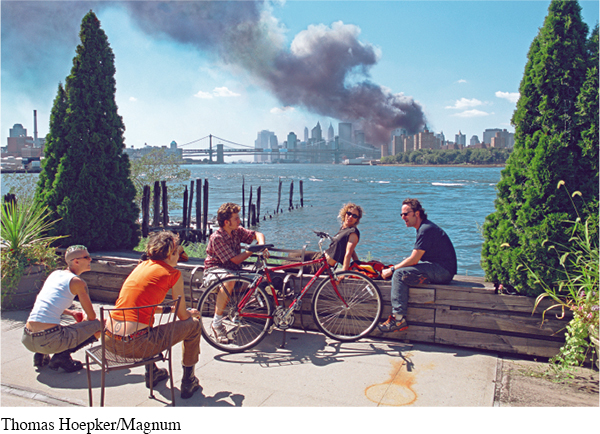1.5 THINKING ABOUT CONTEXT
It is important to understand the ways that background knowledge and context might influence how you observe, identify patterns, and draw conclusions about a subject. Imagine that you know nothing about the rules of football and you are attending a Super Bowl party with friends. You observe that when a player on a team kicks the ball through the goalposts, the team receives three points, but other times when a player does the same thing the team receives only one point. You notice this pattern repeated through the game, so you conclude that teams must get more points the farther away from the goalposts they kick. Then, you decide to act on your new knowledge by suggesting that the team ought to kick the ball from 70 yards away to earn lots of points. Hopefully, someone with background knowledge of the rules (context) will explain the difference between a field goal (3 points) and a point after touchdown (1 point), and you will adjust your conclusion, before you get kicked out of the party.
Look at the photograph on page 14 by Thomas Hoepker from September 11, 2001, the day of a major terrorist attack on the World Trade Center in New York City, which can be seen smoldering in the background of the photo.

As you look closely at the picture, you might notice patterns of the relaxed postures of the people in direct contrast to the devastation of what is happening behind them. Then, you might conclude that the people in the photo are heartless or unconcerned about the tragedy of the day. New York Times commentator Frank Rich looked at this photo and drew the same conclusion:
This is a country that likes to move on, and fast. The young people in Mr. Hoepker’s photo aren’t necessarily callous. They’re just American. In the five years since the attacks, the ability of Americans to dust themselves off and keep going explains both what’s gone right and what’s gone wrong on our path to the divided and dispirited state the nation finds itself in today.
In response to Frank Rich, one of the people in the photograph wrote an email to the online magazine Slate. In his email, he wrote, “A snapshot can make mourners attending a funeral look like they’re having a party.” He went on to describe that, like most people who watched the Towers fall, they were in a “profound state of shock and disbelief,” and that Thomas Hoepker did not ask permission to take the photograph and did not interview them to determine their state of mind. In his email to Slate magazine, he states, “Had Hoepker walked fifty feet over to introduce himself he would have discovered a bunch of New Yorkers in the middle of an animated discussion about what had just happened.” Instead, Hoepker took the photograph without fully understanding the context of the situation.
Look back at the photograph now that you know more about the context. Do you see the scene differently now that you know more about the context of the photo? Would the writer Frank Rich and the photographer Thomas Hoepker have reached a different conclusion if they knew more about their subjects?
So, prior to making observations during the analysis process, try to keep in mind — or find out — the “who, what, where, when, and why” of your subject. This context can provide you with the framework necessary to make an accurate interpretation of the subject you observe. Context will play an important role in your work with the literature and nonfiction found in this book because much of it is either by or about people from different countries with different cultures and customs.